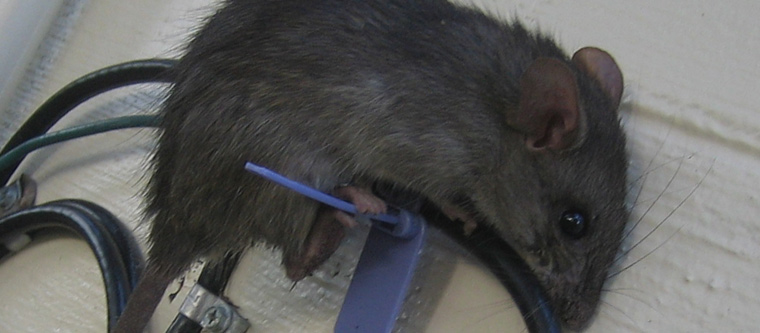-
info@aaanimalcontrol.com
Call us for help in your town
Humane Wildlife Education
Steps to Take About a Trap-Shy Rat
Need rat removal in your hometown? We service over 500 USA locations! Click here to hire us in your town and check prices - updated for year 2020.
Rats are timid by nature, and can be trap-shy, as they are very suspicious towards new elements in their environment. But in all honesty, if you’ve set a trap, and the rat won’t go in it, it’s probably because you’ve either have not installed it correctly, you’re not using the right type of trap, or you haven’t completed the steps that are required before placing a rat trap. I will explain.

You’ve placed a live exclusion one-way rat door on an access hole. This is completely useless if you haven’t done inspection and obstruction of all other rodent entry and exist points. In addition, as cautious as they are, rats will probably be too fearful to push their way out of a spring-loaded door. These types of cage traps don’t work quite well for rats.
You’ve placed a live exclusion one-way funnel door on an access hole. This type of trap will work better than a cage trap, however, like with the aforementioned method, if you haven’t sealed off all other access points, it’s not very likely that the rat will go through this type of door. Another problem with the one-way funnel is that rats vary in size depending on age, so the exit hole needs to be just the right size for the rat to get stuck in there.
You’ve placed glue traps all over the floor. First off, this is a horrible choice, and it’s cruel towards rats. Secondly, most rats are big enough to escape glue trap. Thirdly, if the traps are not set on the rat’s usual path, it has no reason to go through there.
You’ve placed lethal snap traps on the floor or on the ground – let’s say in the attic. This is the most effective way to deal with invasive rats, but set them incorrectly, and you won’t have any success with them. This rat removal procedure entails closing off all rodent entry and exit points. The traps need to be placed on a flat surface, on the rat trails, with the trip pan right on the path the rats use to circulate. Resembling beams, perpendicular to flat edges if possible, at 90 degrees, place multiple snap traps on the attic floor.
If you feel you’ve done everything you need to do in order to ensure correct procedure, and the rat still remains cage-shy, you might want to give pre-baiting a chance by placing the snap traps without setting them up. Theoretically, the rat will eventually get used to this addition to its habitat, and no longer fear them after a while. You can then set them up and see what happens.
If you’ve tried all this, and still nothing, your last resort will be contacting a wildlife removal professional to take care of the problem for you. Try and stay away from regular exterminator and pest control companies. They are not like vermin control professionals, and will approach the problem like they would approach an insect invasion, probably with poison – you don’t want that. In winding up, when dealing with rat invasion, be sure you consult with an experienced expert. I’m not trying to create some sort of catch-22 situation in the wildlife control market where new professionals don’t get calls because of lack of experience, but rats are truly problematic, and can be very difficult to eliminate if you haven’t learned the right way to do it by experimenting again and again until you bring your method to perfection.
For more information, you may want to click on one of these guides that I wrote:
How much does rat removal cost? - get the lowdown on prices.
How to get rid of rats - my main rat removal info guide.
Example rat trapping photographs - get do-it-yourself ideas.
Rat job blog - learn from great examples of rat jobs I've done.


















